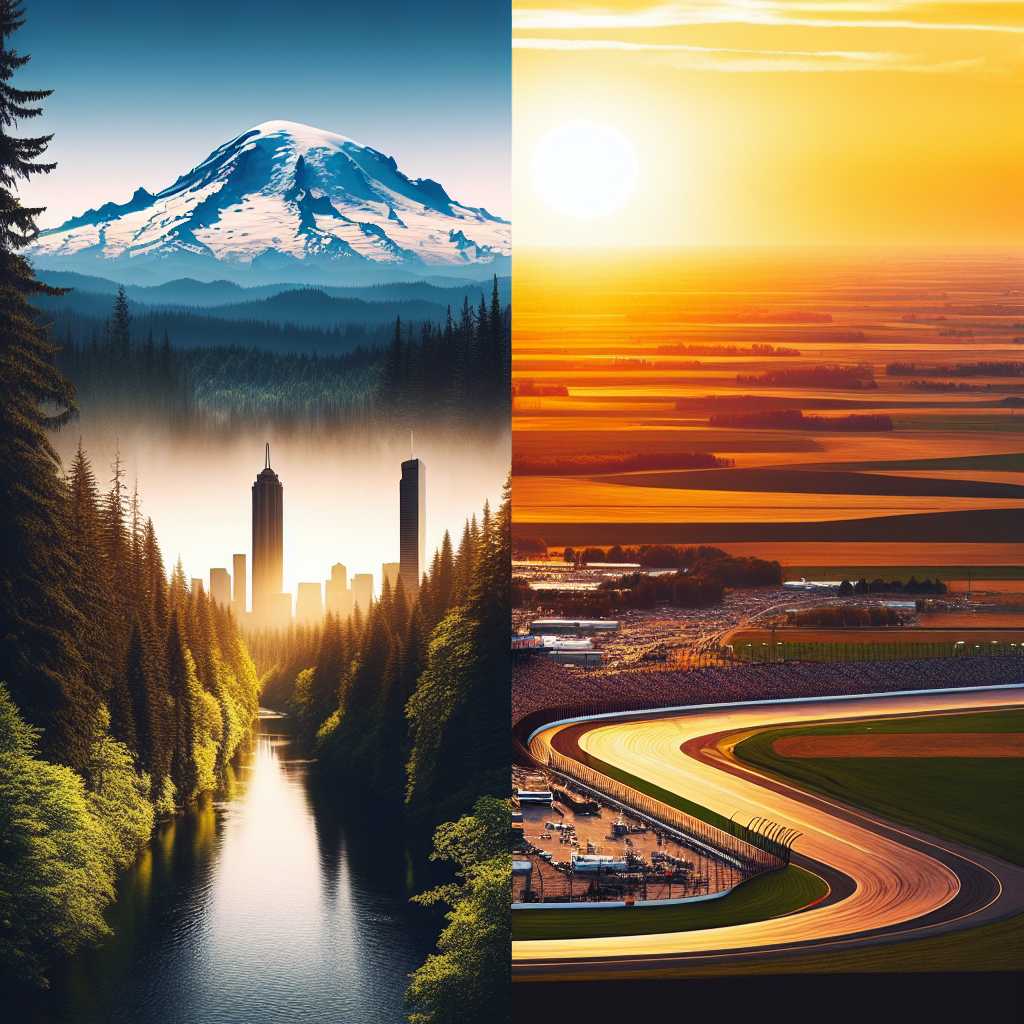Exploring the Differences and Unique Qualities of Washington State and Indiana State
While they share the commonality of being part of the United States, Washington and Indiana landmarks are characterized by various features, histories, and cultural elements that set them apart. In this extensive examination, we shall delve into the aspects that differentiate Washington State in the Pacific Northwest from Indiana State in the American Midwest, touching upon their geographical distinctions, economic virtues, historical narratives, and cultural identities.
Geographical Contrasts: From Rainforests to Farmlands
Understanding the two states begins with an appreciation for their contrasting landscapes.
Washington’s Natural Diverse Beauty
Washington State is known for its dramatic topography with mountains like the Cascades and Olympics dominating its skyline. The presence of lush rainforests in the Olympic Peninsula, alongside the arid conditions found in the eastern part of the state, showcases a sublimely diverse climate. Coastlines hug the Pacific Ocean, while Washington also boasts large bodies of freshwater such as Puget Sound and Lake Washington.
Indiana’s Agricultural Landscape
Indiana is recognizable for its expansive farmlands, recognized in part for corn production amongst other crops. The state is part of the Corn Belt and provides a flatter terrain compared to Washington’s mountainous relief. With a more uniform climate conducive to agriculture, Indiana has fewer dramatic natural landmarks but offers a serene beauty characterized by its plains and waterways like the Wabash River.
Economic Focus: Tech Innovation vs Manufacturing Dominance
The economies of Washington and Indiana also share little in common, each aligning with different sectors central to their industrial output and financial growth.
Washington’s Economy: A Technological Powerhouse
In recent years, Washington’s economy has been heavily shaped by technology and aerospace industries. Industry giants such as Microsoft, Amazon, and Boeing contribute significantly to both employment and economic activity in this Pacific Northwest gem.
Indiana’s Economy: Manufacturing and Agriculture Strength
Conversely, Indiana has historically been reliant on manufacturing and agriculture, with companies like Eli Lilly in pharmaceuticals and Cummins in engine manufacturing boosting its industrial standing. The well-known auto industry presence in Indiana further confirms its role as a formidable manufacturing hub.
Cultural Insights and Historical Nuggets
Beyond geography and economy lies an intricate tapestry of culture, allowing for even richer comparisons.
A History Steeped in Trade and Innovation: Washington
Washington’s history is deeply entwined with trade owing to its coastal location; Native American tribes thrived on rich fisheries before European settlement. The later gold rush era and subsequent rise as a tech innovator have peppered Washington State’s culture with layers of entrepreneurial spirit matched with natural resource stewardship.
Indiana’s Heritage: Crossroads of America
From Johnny Appleseed’s legacy of apple orchards to being dubbed “The Crossroads of America” due to its integral position in nationwide logistics, Indiana carries historical significance that derives from transit and heartland values. The manufacturing booms added diversity to the mix, attracting workers across ethnicities contributing to a melting pot aura.
Distinct Political Landscapes and Social Nuances
Politics can vastly diverge between states and form part of their social fabric.
Washington: Progressive Politics
In general terms, Washington tends to lean toward progressive political views with a tilt to liberal policies on a range of issues from environmental regulation to social concerns.
Indiana: Conservative Underpinnings
On the other hand, Indiana traditionally espouses more conservative ideologies, often electing Republican representatives both at state-level positions and national congressional seats.
